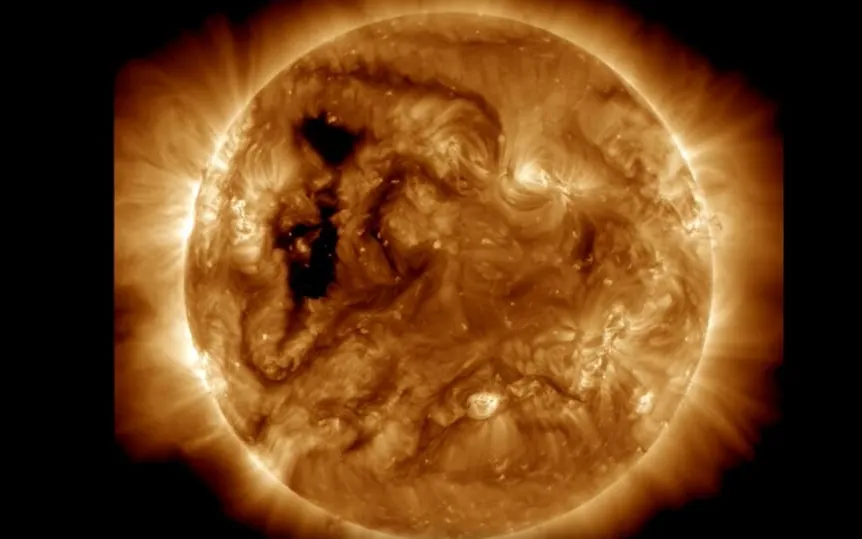NASA Traces Origin of Solar Wind Stream Heading Towards Earth, Possible Solar Storm Imminent
Just a few days ago, an unexpected solar storm occurred, causing auroras in the Arctic Circle. The cause of this storm was unclear as no coronal mass ejection (CME) was anticipated. However, it was discovered that a breach in the magnetosphere allowed solar radiation to penetrate easily. Now, a similar incident is imminent, but with much greater intensity. A massive aperture has formed on the Sun, releasing a continuous flow of solar winds. According to predictions, these winds will reach Earth on October 30, potentially triggering a solar storm. Images from the NASA Solar Dynamic Observatory reveal the opening through which the solar winds are escaping.
According to a SpaceWeather report, “Minor G1-class geomagnetic storms are likely on October 30, when the solar wind stream is expected to hit Earth’s magnetic field. Gaseous material is flowing from a double-slit hole in the sun’s atmosphere.” The opening seconds of this NASA video show a short video of the sun from the moment the solar wind escapes its surface.
A solar storm may hit Earth on Monday
The forecast has called for a G1 storm, which essentially means it will produce aurora borealis and may cause interference to some radio waves, likely resulting in communication disruptions for mariners, pilots, drone pilots and radio amateurs.
However, this is not the full number of solar storms. In the worst cases, such storms can disrupt GPS and cell phone networks, disrupt Internet connectivity, damage satellites, cause power grid outages, and even corrupt ground-based electronics.
The role of the NASA Solar Dynamics Observatory
The NASA Solar Dynamics Observatory (SDO) houses a full suite of instruments for observing the Sun, and has done so since 2010. It uses three very important instruments to collect data on various solar activities. They include the Helioseismic and Magnetic Imager (HMI), which measures high-resolution longitudinal and vector magnetic fields across the entire visible solar disk, the Extreme Ultraviolet Variability Experiment (EVE), which measures the sun’s extreme ultraviolet radiation, and the Atmospheric Imaging Assembly. AIA), which provides continuous full-disk observations of the solar chromosphere and corona in seven extreme ultraviolet (EUV) channels.




